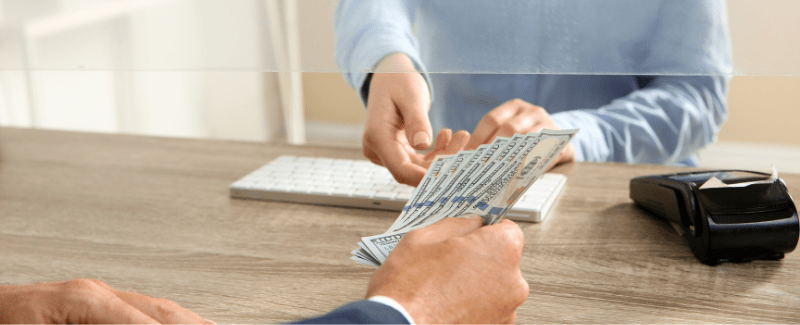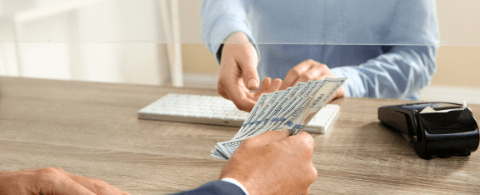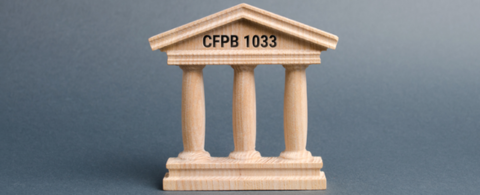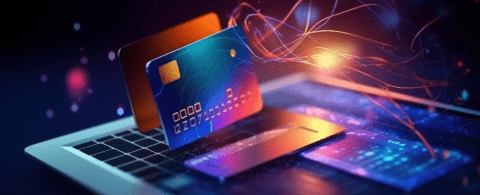How Do the Underbanked Pay Their Bills?
Posted by Tiffany Taylor and Alison Arthur on 14 Jun 2022


Not so long ago, banking relationships were a staple of American life. Local banks and credit unions were a critical component of local communities, where tellers and customers or members often knew one another by name. Banks and credit unions fueled the American Dream by helping fund everything from new homes and automobiles to college tuition and vacation funds. These high-touch relationships were an integral part of the American economy and something that citizens relied upon for their financial wellbeing.
With the deregulation of the banking system and the digitization of everything from cash withdrawals to check deposits, banking relationships are not what they once were. Customers and members can get away with rarely setting foot inside a brick-and-mortar location. They may seldom if ever, interact with the employees at physical locations. And there are many Americans who cannot afford the cost of traditional banking at all. These people are often referred to as the “unbanked” or “underbanked.”
The numbers
The FDIC publishes a biennial report that explores the reality of people who are unbanked. Here are some key findings from the most recent study from 2019.
- 5.4 percent of US households were unbanked in 2019, meaning that no household members had a savings or checking account—this represents approximately 7.1 million U.S. households.
- The FDIC did not report on underbanked Americans in its latest survey; however, according to one estimate, approximately 24 percent of Americans remain underbanked, meaning while they own a checking or savings account, they seek alternative financial services (AFS) from non-traditional providers.
- Examples of AFS include money orders, check cashing, international remittances, payday loans, refund anticipation loans, rent-to-own services, pawn shop loans, or auto title loans.
- The “fully-banked” rate was 94.6 percent, meaning the household had a bank account and did not use AFS in the past 12 months—the highest rate since the FDIC began the study in 2009.
Why choose AFS over traditional checking and savings accounts?
Choosing AFS can be attributed to many factors, the most pressing being the minimum balances associated with traditional banking accounts. According to the FDIC survey, not having enough money to meet minimum balance requirements was the most often cited reason (48.9%) for not having a primary checking or savings account. Many financial institutions require high minimum balances to get the most basic services for free or at a low cost. If account holders are being charged for basic services, these deductions can add up quickly and leave them with less money in their accounts than they might expect.
Over 34 percent of respondents cited high account fees as a deterrent. The fees associated with bounced checks and overdraft protection can be of particular concern. If a banking customer does not have sufficient funds to cover a check, they may be slammed with an average overdraft fee of $34. The Consumer Financial Protection Bureau (CFPB) reported in 2019 that US customers paid fees totaling $15.5 billion for bounced checks or overdrafts. For many customers, these fees and the uncertainty that comes with them are simply too much for their budgets to handle. It’s no wonder then, that digital banks have started a no-overdraft trend, resulting in many of the largest banks lowering or abandoning these charges.
How do the unbanked and underbanked pay their bills?
Fully-banked customers can pay their bills simply by dropping a check in the mail or using their bank account information for ACH transactions. It’s not that easy for the unbanked and underbanked. There are more hoops to jump through to pay minimums or balances on time. Here are some popular ways that the unbanked and underbanked can pay their bills in the absence of traditional banking relationships.
Option 1: Prepaid debit cards
Prepaid debit cards give customers the option to make card payments without traditional bank accounts or credit cards. They simply buy the prepaid card, load money onto it, pay the associated fees, and use it like a traditional debit or credit card. It provides the user experience of a traditional credit or debit card—including the ability to make payments online—without maintaining an underlying account.
Option 2: Cash
Despite the growing buzz around the demise of cash, cash remains a go-to method for the unbanked and underbanked to pay their bills. This is where walk-in services and kiosks can be invaluable for businesses with customers that require a cash option to pay their bills.
Option 3: Check cashing
Check cashers do just that—they deposit endorsed checks into their business bank account in return for immediate cash to the customer, less a transaction fee. They can also provide other financial services including bill payments, money transfers, and money orders. Thanks to the highly transparent fee structure for these services, in addition to the immediate receipt of money, check cashing can be a viable alternative for people without traditional bank accounts.
Not every American has or wants, a traditional banking relationship. That’s why it’s important to offer a variety of payment methods (including cash and prepaid debit cards) and payment channels (including walk-in and kiosk options for cash transactions) that serve the diverse needs of all consumers.
Convenience and flexibility around the payment channels you offer are an important part of your customer experience. Learn more in Offering More Payment Channels Improves the Customer Experience.
Updated from a blog originally published March 19, 2018.
Today’s legacy and siloed banking technology infrastructure limit financial institutions’ ability to rapidly innovate. It’s time to look at money movement in a new way. Alacriti’s Orbipay Unified Money Movement Services does just that. Whether it’s real-time payments, digital disbursements, or bill pay, our cloud-based platform enables banks and credit unions to quickly and seamlessly deliver modern digital payments and money movement experiences. To speak to an Alacriti payments expert, please call us at (908) 791-2916 or email info@alacriti.com.
Schedule A Personalized Demo
Schedule a Free Consultation






